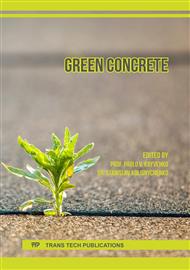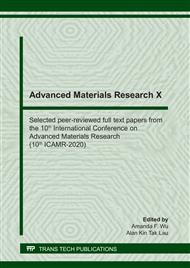p.115
p.120
p.126
p.131
p.142
p.150
p.157
p.165
p.171
Thermal Transmission Properties of Sustainable Concrete with Supplementary Cementitious Materials
Abstract:
Understanding the thermal properties of a construction material is necessarily to evaluate its heat transfer resistance that has a major contribution to the energy-efficiency required to achieve sustainable structure. Thermal properties are evaluated through three main parameters namely: thermal conductivity, thermal resistivity and thermal transmittance. The aforementioned parameters are commonly referred as K-value, R-value, and U-value respectively. Recent regulations by Dubai municipality enforced to use sustainable concrete in construction. This is by replacing cement with supplementary cementitious materials (SCMs), such as grand granulated blast furnace slag (GGBS) and fly ash. The use of grand granulated blast furnace slag (GGBS) at relatively high percentage replacement became a typical practice in ready-mixed concrete industry in Dubai. As such, it is essential to characterize the thermal properties of this sustainable concrete. The current paper investigates the thermal properties of sustainable concrete mixtures incorporating supplementary cementitious materials, air entrainment additives, polypropylene and hybrid synthetic fiber. K-value, R-value and U-value are evaluated in accordance with ASTM C518. Additionally, hardened density of all investigated mixtures are measured. The results show that the foamed concrete has better heat transfer resistance than that for the non-air entrained mixture.
Info:
Periodical:
Pages:
142-149
Citation:
Online since:
July 2020
Authors:
Price:
Сopyright:
© 2020 Trans Tech Publications Ltd. All Rights Reserved
Share:
Citation:



